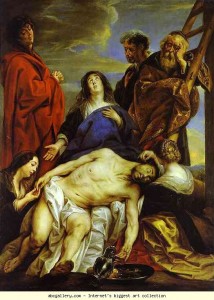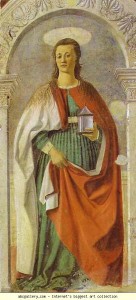 I wonder what associations come to mind when you think of the season? For many, it’s vibrant crocuses, chocolate bunnies and over-sized eggs, with some including the odd pastel cross thrown in for good measure. For others, it represents things deeper: the primary event of the Christian calendar– a time to remember and celebrate the Resurrection of Jesus from the grave. For still others however – possibly the majority in our society today,- the concept of a physical, bodily resurrection is about as believable and scientific as Carroll’s March Hare disappearing down the rabbit hole. You may as well believe in the one with as much credibility as the other.
I wonder what associations come to mind when you think of the season? For many, it’s vibrant crocuses, chocolate bunnies and over-sized eggs, with some including the odd pastel cross thrown in for good measure. For others, it represents things deeper: the primary event of the Christian calendar– a time to remember and celebrate the Resurrection of Jesus from the grave. For still others however – possibly the majority in our society today,- the concept of a physical, bodily resurrection is about as believable and scientific as Carroll’s March Hare disappearing down the rabbit hole. You may as well believe in the one with as much credibility as the other.
Yet for the writers of the New Testament, resurrection was the central focus of their testimony and teaching. Peter, eye witness to the life of Jesus, wrote, “…of an indestructible inheritance… made available through the resurrection of Jesus Christ from the dead.” (1 Peter 1:3-4.) Paul, primary evangelist to the non-Jewish nations, claimed, “If [Jesus] Christ has not been raised, your faith is worthless.” (1 Cor 15: 17-18). Something deeper than rabbit holes seems to be going on here.
One objection commonly raised against the credibility of New Testament resurrection accounts is the supposed inconsistency of the four resurrection narratives. As much of this supposed inconsistency is levelled at the women claimed to have been present at the cross, it is this contention I wish to address here.
One of the difficulties understanding the gospel narratives is the variant use of identification used to identifying the women present. It might be helpful at this point to make a quick list of those mentioned in Matthew, Mark, Luke and John, laying the material out side by side for ease of identification. Once this is done, we find the following:
Matthew – Mary Magdalene
Mary, mother of James & Joseph
Mother of the sons of Zebedee
Women who had followed from Galilee
Mark – Mary Magdalene
Mary, mother of James the Younger & Joses
Salome Women who had followed from Galilee
Luke – Women who had followed from Galilee
John – Mary, Jesus’ mother
His mother’s sister
Mary, wife of Clopas
Mary Magdalene
Now, if we were to colour code the lists, we would come up with something like this:
Matthew – Mary Magdalene
Mary, mother of James & Joseph (or, in its variant form and in many manuscripts, Joses)
Mother of the sons of Zebedee
Women who had followed from Galilee
Mark – Mary Magdalene
Mary, mother of James the Younger & Joses
Salome Women who had followed from Galilee
Luke – Women who had followed from Galilee
John – Mary, Jesus’ mother
His mother’s sister
Mary, wife of Clopas
Mary Magdalene
 Putting this information together, we get an increasingly clear picture of the women at the cross that Friday afternoon. While Luke omits mentioning individual women, the other three writers consistently identify Mary Magdalene; Salome, whom John identifies as sister to Jesus’ own mother and Matthew as mother of the sons of Zebedee, James and John, (the Beloved disciple); and Mary, wife of Clopas and mother of James and Joses. (This Mary is sometimes called the “Other Mary”). Running throughout three of the four accounts are the women, following from Galilee.
Putting this information together, we get an increasingly clear picture of the women at the cross that Friday afternoon. While Luke omits mentioning individual women, the other three writers consistently identify Mary Magdalene; Salome, whom John identifies as sister to Jesus’ own mother and Matthew as mother of the sons of Zebedee, James and John, (the Beloved disciple); and Mary, wife of Clopas and mother of James and Joses. (This Mary is sometimes called the “Other Mary”). Running throughout three of the four accounts are the women, following from Galilee.
Rather than there being any discrepancy or indeed, difficulty correlating these early accounts, I would suggest they are remarkably consistent. Considering the age of this early manuscript tradition, dating from the middle to end of the first century, these accounts present us with a clear and heart warming account of the women present at the foot of the cross. Crucifixion was a long, terrible, agonising ordeal. For Jesus’ mother, aunt, the other Mary and Mary Magdalene to have stood there over the six hours it took for Jesus to die, expressing their undying love and faithfulness, is indeed remarkable from both a physical and a psychological perspective. Noticeable in its absence, is any mention of the men. It is the women who followed Jesus to the last, and as we shall see, it is those same women who were rewarded with the first post-resurrection experiences of the risen Jesus. Far from being a sexist portrayal, what we have here is a picture both accurate in its detail and amazingly ahead of its time in the primary role assigned to the women.

